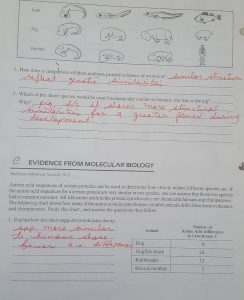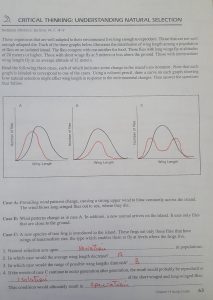Check the key for Evidence for evolution worksheet here:




Please complete the cell crossword and the chart on the back of the page (nuclear sap, hyaloplasm, etc). You may have to research online to give a brief description of the function of these cell parts.
Answer the lysosome question:
“What’s the deal with lysosomes?” Do lysosomes occur in both animal and plant cells? Give a brief explanation as to why some textbooks indicate that they only occur in animal cells, while other resources show them occurring in plant cells.
Label the cell diagram (not for handing in).
Complete the reading and questions for the case study “little mito.” Be ready to hand in or use the answers as part of a class discussion.
Complete parts A – C on Evidence for Evolution handout. Complete crossword (not chart on back) to the best of your ability. Complete cell organelles chart and cell diagrams.
Please complete pages 5 – 8 in workbook and bring with you next class.
In case you wish to do more reading, a link to (one of many) evolution website is here.
Finish any outstanding work (themes/evolution questions, dichtomous key, cladograms). Read p. 16 and 17 in workbook. Finish mitosis handout and rove beetle assignment (read and summarize on back). KNow and be able to explain the 6 main steps in natural selection.
Continue with your reading (see earlier blog post) and begin reading chapter 14 in textbook. Read p. 16-17 in workbook.
Bozeman video on natural selection
(shown in class) and Hardy Weinberg are here in case you wish to watch them.
Finish diagram of a cell (label it!). You may need to look up images of cells online. Do the questions on p. 4 of the workbook, including #7 and 8, which may require more research and should be written on a separate sheet, if necessary.
Finish the Review (themes/evolution) and hand in next class. Read p. 13 – 15 in workbook and ch. 13 in text.
Complete the “make your own dichotomous key” assignment (include diagrams). Read pages 11-12 in workbook, and try the concept questions on p. 12 (not for handing in; check answers in the back of the book), and be ready to discuss or otherwise engage with the topics covered.